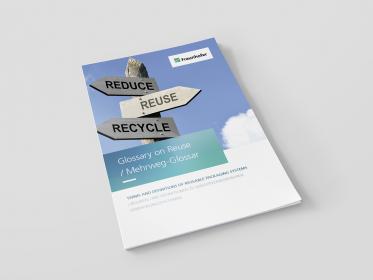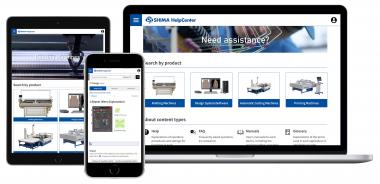Klarheit im Begriffs-Dschungel der Circular Economy
Wie unterscheiden sich Wiederverwendung und Recycling? Wie ist der deutsche Begriff Mehrweg zu verwenden, wie grenzt er sich von Einweg ab? Für welche Bewertung sind Wiedereinsatzquoten sinnvoller als Recyclingquoten? Antworten auf diese nicht zuletzt durch die PPWR (Packaging & Packaging Waste Regulation der EU) aufgeworfenen Fragen und kurze Erläuterungen zu Begrifflichkeiten der Kreislaufführung von Verpackungen liefert das neue auf Deutsch und Englisch erschienene »Mehrweg-Glossar/Glossary on Reuse«. Das Fraunhofer-Institut für Umwelt-, Sicherheits- und Energietechnik UMSICHT und das Fraunhofer-Institut für Materialfluss und Logistik IML erstellten dies im Auftrag der Stiftung Initiative Mehrweg, um Klarheit in die oft nicht trennscharfen Begrifflichkeiten rund um Wiederverwendung und die Circular Economy zu bringen.
Das rund 40 Seiten umfassende, zweisprachige Glossar hat das Ziel, Beschreibungen und Vergleiche im Bereich der wiederverwendbaren und rezyklierbaren Verpackungssysteme zu schärfen. Das Werk soll als Arbeitshilfe dienen, um die Kommunikation zwischen Wissenschaft, Politik, Unternehmen und Verbraucher*innen zu erleichtern. Begrifflichkeiten wie Recycling, Reutilization, Einweg, Mehrweg oder Recyclingquoten sind omnipräsent, jedoch nicht immer trennscharf definiert. Beispielsweise werden Wiederverwendung und Recycling manchmal als konkurrierende Verfahren angesehen, manchmal fungiert Recycling als Oberbegriff, manchmal Wiederverwendung. »In diesem Glossar betrachten wir die Wiederverwendung als zerstörungsfreie Kreislaufführung, d.h. das Objekt und seine Form bleiben erhalten, während das Recycling einen zerstörenden Aufbereitungsprozess beschreibt, bei dem es vor allem um den Stofferhalt geht«, gibt Jürgen Bertling von Fraunhofer UMSICHT und Mitautor des Glossars einen Einblick.
Das Glossar ist in vier Kapitel unterteilt: Zunächst erläutert das Autorenteam relevante Aspekte für den Vergleich von Verpackungssystemen, das nächste Kapitel enthält Übersichtsgrafiken zu Verpackungstypen in Abhängigkeit ihrer Kreislauffähigkeit und eine schematische Darstellung verbundener Kreisläufe. Die Definitionen aller relevanten Begrifflichkeiten wie z. B. Wiederverwendung und Weiterverwendung sowie eine Abgrenzung und Einordnung der im Deutschen verwendeten Begrifflichkeiten Einweg und Mehrweg finden sich im dritten Kapitel. Das Glossar schließt mit einem Kapitel zu Formeln und Formelzeichen für Berechnungen, die zu einer möglichst allgemeinverständlichen Schreibweise in wissenschaftlich-technischen Analysen beitragen sollen.
Das Glossar ist frei zugänglich und kann unter diesem Link heruntergeladen werden.
Kreislaufwirtschaft Recycling Glossar Fraunhofer-Institut für Umwelt-, Sicherheits- und Energietechnik UMSICHT
Fraunhofer-Institut für Umwelt-, Sicherheits- und Energietechnik UMSICHT
Fraunhofer-Institut für Materialfluss und Logistik IML









